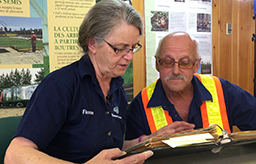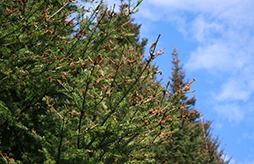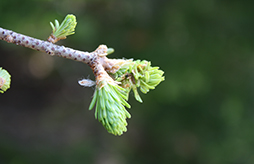.jpg)
Record 2023 New Brunswick Moose Harvest
Congratulations to this year’s successful hunters!
The annual moose hunt in New Brunswick saw record numbers of applications received and moose harvested.
According to numbers released by the provincial department of Natural Resources and Energy Development, a record 4,064 moose were harvested against 5,115 licenses issued during the season that ran September 26 – 30. That means nearly 80 per cent of hunters were successful.
These numbers are in stark contrast to the province’s moose population just over 60 years ago. Between 1936 and 1960 there were so few moose that it was illegal to hunt them in New Brunswick.
What has happened since that time that has led to such an abundant moose population?
There is no doubt about it, responsible forest management practices have contributed to the abundant populations of moose, deer and songbirds we see today in New Brunswick forests.
Good forestry practices including tree planting, responsible herbicide use, and selective and clear cutting, create the mix of open spaces, young growth and mature trees that support a diverse range of habitats. This diversity of habitats leads a diversity of plants, birds, mammals, reptiles, amphibians, insects and fish.
Combined, these measures contribute to healthy, diverse and resilient forests, abundant wildlife populations, world class conservation and a strong economy that benefits all New Brunswickers
Our approach is implemented at the landscape level, encompassing all hectares of the forest and cascading down to the smallest unique site. These three pillars are tied together by our long-term commitment to funding research, helping us understand landscape-level impacts of forest management. We apply research outcomes to adapt our forest management strategy and operational plans to maintain our commitment to conservation and biodiversity.
Our commitment to research
Since 1990, we have invested more than $30 million in forest-based, peer reviewed research to learn more about our region’s fish, wildlife and plants, and the impacts of forest management. This research ensures we are using the best science to guide our conservation strategy across the forest and doing our utmost to avoid, minimize or mitigate impacts. We are a founding partner of many wildlife and forestry research projects and have collaborated with dozens of researchers and more than 100 graduate students.
Our Forest Research Advisory Committee (FRAC) was established in 1998 to bring forest managers and researchers together. FRAC’s goals are to identify, advocate for and conduct research to address knowledge gaps. Our research partners’ work is often peer-reviewed and published. We are currently focused on landscape-level impacts on water, birds, beetles, bryophytes, moose, deer and tree diversity. Through our decades of research experience, we have been able to show a clear role for both forest management and conservation efforts to help maintain biodiversity on our managed lands.
Research highlights
Songbird habitat – Since 2016, we have partnered with researchers at Natural Resources Canada, Carleton University and the Canadian Wildlife Service to conduct an ongoing study to understand the presence and habitat preferences of songbird species in the forests in our region. The research especially focuses on the Canada Warbler and Olive-Sided Flycatchers, which are listed as a federal Species of Concern. Preliminary conclusions from this research show that the two species have flexibility in their habitat selection and that managed/working forests support abundant habitat for these songbirds. We also see the largest diversity of songbirds on our freehold forest lands compared to other, less intensively, managed adjacent lands.
Understanding climate: moose and winter tick interactions – To better understand impacts of winter ticks, climate change and predation on moose populations, we are a major sponsor of an ongoing research project in partnership with Université de Laval, Université de Montréal, the University of New Brunswick and the provinces of New Brunswick and Quebec. To date, 286 calves have been equipped with GPS collars in 5 regions to assess their movement and survival, as well as the health of moose populations. Preliminary findings suggest ticks are increasing the variability in calf survival and moose abundance.
Whitetail deer habitat in the working forest – We have partnered with six research and government groups in an ongoing study of the impacts of intensive forestry on the population of whitetail deer. This four-year project focuses on understanding habitat selection by deer related to snow depth/winter severity versus food availability, forest cover and more. By using data from collared animals, we can predict whitetail deer population growth and how whitetail deer use the forest, informing appropriate areas to conserve for deer wintering.
Questions about our Healthy Forest Approach? Read the FAQ.
(1).png?n=7605)
.jpg)


.jpg)















_small.jpg)

.jpg)

.jpg)
.jpg?n=6166)


